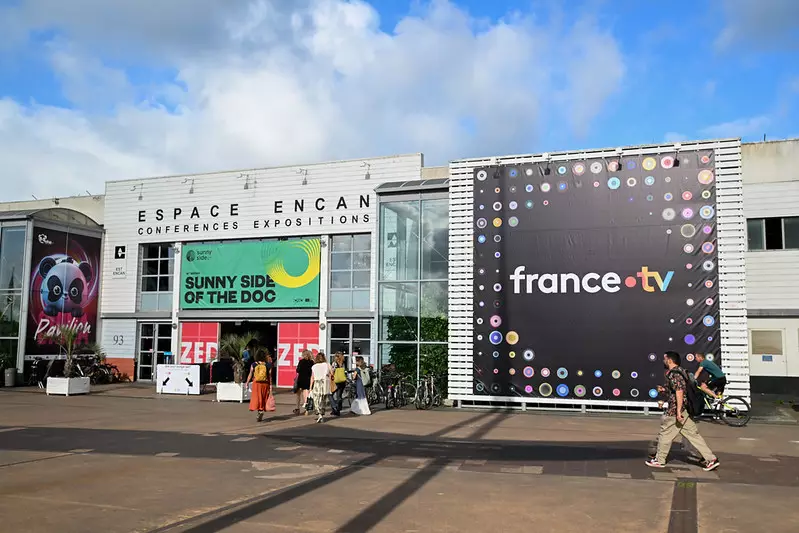Every year, documentary filmmakers and industry professionals descend upon La Rochelle, a quaint fishing town, eagerly anticipating the Sunny Side of the Doc market. The 36th edition, held over a brief four-day window, demonstrated once again the growing complexities and ambitions of documentary storytelling in a world saturated with content. While the event’s statistic-laden report brags about an influx of 2,100 participants from 60 countries and over 1,000 companies, such dazzling figures mask the deeper pressures and transformations shaping the industry. It’s a paradoxical arena—on one side, a festival celebrating artistic vision and cultural exchange; on the other, a marketplace battling financial constraints and strategic pivots.
Aurélie Reman, the Managing Director, heralded the 2025 edition’s success as “exceeding expectations,” with a program that supposedly pushed beyond mere networking to foster cross-border storytelling innovation. I find this laudable yet somewhat optimistic. While facilitating international collaboration is essential, one must question how much substantive change can be achieved during a condensed four-day festivity largely grounded in pitching and deal-making. True innovation arguably requires sustained dialogue and systemic shifts in funding models—something hard to realize in such a transient event. Nonetheless, her recognition of funding challenges frank enough to highlight this industry’s precarious balancing act gives the festival a dose of pragmatic humility in an otherwise celebratory context.
Recognition that Reflects a Global Tapestry—And Tensions
The award distribution reveals a refreshing diversity of voices from underrepresented regions and genres, ranging from groundbreaking pitches like “Restless Farewell” by China’s Shanghai Media Group to “Mama,” an Ecuadorian project spotlighting impactful campaign storytelling. This geographical and thematic spread is undoubtedly a vital counterbalance to the Western-centric narratives that have long dominated the documentary world. There is palpable value in awarding projects from Armenia, India, and other emerging players, signaling a push toward a more polyphonic documentary ecosystem.
However, the decision to highlight these ‘New Voices’ alongside the more established Western companies may unintentionally reinforce disparate access to resources and global platforms. While the award spotlight offers visibility, it risks becoming a token gesture if not backed by long-term support structures for these filmmakers. The celebration of ‘impact campaigns’ and ‘nature & environment’ pitches also points toward popular socially conscious trends that, while deserving, sometimes overshadow less conventional but equally critical stories.
A Marketplace Wrestling With Its Identity
Beneath the accolades and hustling executives lies a more fraught reality of an industry wrestling to remain commercially viable while sustaining its cultural and ethical responsibilities. The involvement of streaming giants and broadcasters at Sunny Side illustrates the tectonic shifts brought about by digital disruption. While this infusion of capital and distribution channels injects optimism, it also risks commodifying documentaries into bite-sized, algorithm-driven content. The festival’s effort to “reimagine cross-border storytelling” sounds promising but may remain aspirational if creative independence continuously bends to market demands.
Furthermore, the event’s compressed timeframe and concentration of activities polarize engagement opportunities. Aspiring filmmakers from less wealthy countries or smaller outfits risk being elbowed out of prime access to influential decision-makers. Despite the impressive numbers, the festival’s format may inadvertently perpetuate inequities within the industry it aims to democratize.
The Role of Documentary Festivals in a Changing World
As documentaries evolve from niche educational tools to mainstream entertainment and political engagement vehicles, festivals like Sunny Side must critically evaluate their role beyond recognition and networking. The 2025 edition’s thrust to tackle funding hurdles and foster industry pivots is a step in the right direction, but one wonders if such events can wield enough influence to enact real change. The buzz around awards, while crucial for visibility, risks eclipsing the more uncomfortable discussions around dominant narratives, access, and impact.
Sunny Side’s attempt to transcend traditional formats and cultivate a vibrant marketplace shows promise but also mirrors the broader dilemma of the cultural industries: reconciling creative integrity with commercial survivability. It is imperative for stakeholders to challenge the status quo and innovate sustainable financial and structural pathways, ensuring that documentaries continue to illuminate and interrogate, rather than just entertain.


Leave a Reply